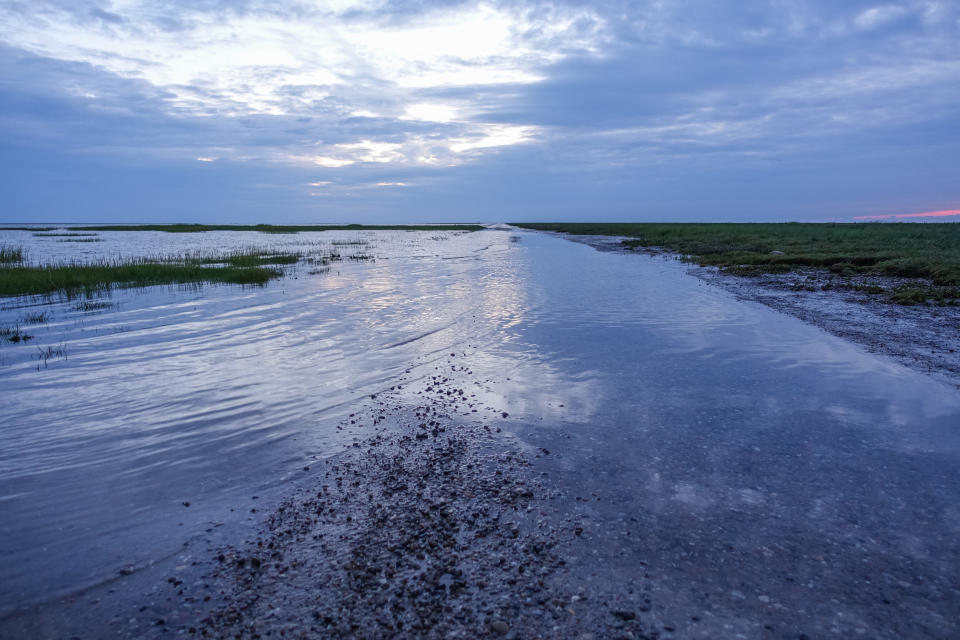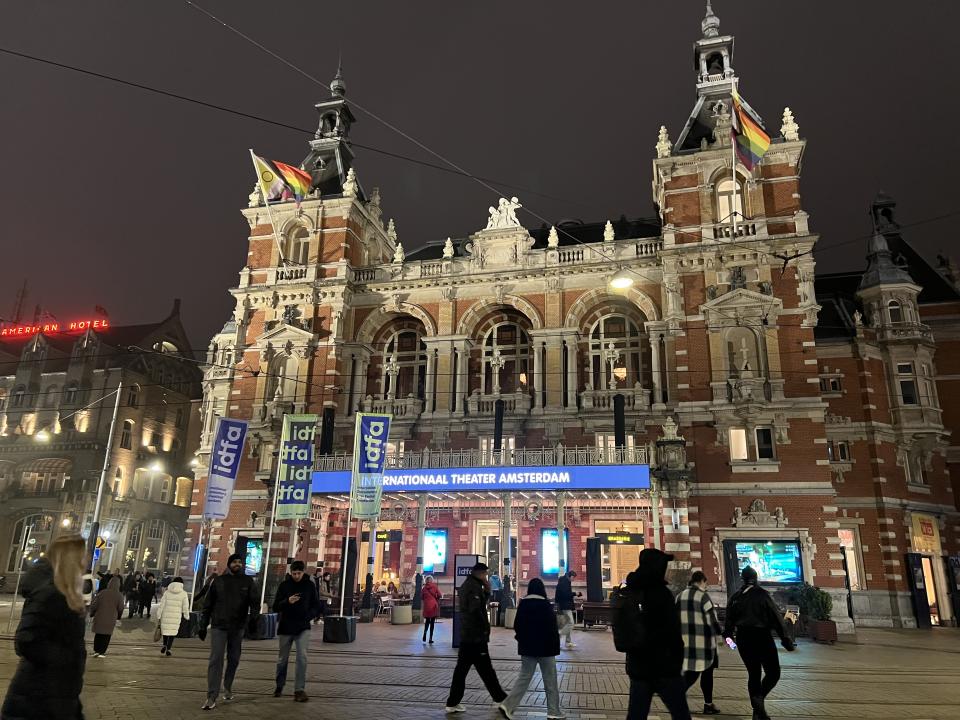Danish Bachelor Farmer Seeks Female Companion To Share Life On Remote Island, In IDFA World Premiere ‘As The Tide Comes In’

On his radio show A Prairie Home Companion, Garrison Keillor used to refer amusingly to “Norwegian Bachelor Farmers” who resided in his (make believe) hometown of Lake Wobegon, Minnesota.
Not only was the town fictional, so were those putative Norwegian yeomen. For a real-life, honest-to-goodness, authentic Scandinavian Bachelor Farmer, you can turn to the documentary As the Tide Comes In, which recently made its world premiere at the International Documentary Festival Amsterdam (better known as IDFA). The film directed by Juan Palacios principally revolves around Gregers, the last farmer inhabiting remote Mandø, an island in Denmark’s Wadden Sea.
More from Deadline
Mandø, measuring only 8-square kilometers, isn’t easy to access.

“It’s a place that is pretty much ruled by the tides,” Palacios explains. “In order to get to the island, you have to go through this road that gets flooded twice a day. Actually, a lot of tourists, they don’t know about this, and sometimes they get stuck, and some people have died actually on that road. It’s risky.”
Gregers would very much like to end to his bachelorhood and find a mate to join him on the island. But it’s a tough sell convincing a female companion to give up everything for life on Mandø.
“He’s a bachelor that doesn’t want to be a bachelor, but also he’s a farmer that doesn’t want to be a farmer, in fact,” Palacios tells Deadline. “I think what I found attractive about this character, Gregers, is that he holds a lot of contradictions. On one hand, the island for him, there is a strong sense of belonging and his identity, it’s so much attached to the place. At the same time, it’s a place that he wanted to leave when he was younger. I mean, he had the dream of becoming a pilot.”
Gregers’ fascination with flight extended beyond aircraft. “He really was into birds. So maybe even becoming an ornithologist or something like that was one of his dreams. However, in the end, he ended up spending his whole life on the island as a farmer, just taking care of the farm he inherited from his parents. I think there is this kind of love-hate relationship with the place.”
“Inheriting” the farm might be a misnomer. Gregers’ parents are alive, but unable to tend to the land themselves (the father seems to have lost a hand at some point). Mom and dad are unintentionally comedic elements of the film, humorously taciturn. Almost like a mute Greek chorus.
Another touch of delight in the film comes from a superannuated woman named Marie (nickname Mie), who enjoys nothing more than celebrating her birthday, even after running through 98 of them before production on the documentary began.

“We were filming quite a lot with her because she’s like a living memory of the island,” Palacios notes. “When we met her, she was 99 and then basically her dream was to turn 100… She was all the time talking about it. I think somehow being alive, she took a big pride on just the fact that she was that old.”
Mie had long outlived a son, who was killed in tragic circumstances on the island. “Her son died because of the tide. He was coming back home by this road that gets flooded and I think it was a foggy evening. And then all of a sudden he got a bit lost, and then the water came. I don’t even know if they found the body. I think it was only his bike that they found. So, she kind of carried all these memories.”
Palacios filmed Mie’s 99th birthday celebration, and captured birthday party number 100 as well. On both occasions, Mie blew out the many, many candles on her cake with enormous glee. “She was so happy to turn 100,” Palacios says.

As the Tide Comes In premiered in International Competition at IDFA, the festival’s most prestigious category. Programmers hailed the documentary as a portrait of a microcosm — only 27 people live on Mandø — saluting the film’s “masterly shots of the distinctive landscape, shifting skies, and seas that change with the wind and tide.”
Getting those masterly shots was no easy trick. Palacios served as cinematographer as well as director.
“To get the right shot, we would have to get in the mud or in the [sea]. One shot when we were filming the storm, the water was reaching up to our hips,” Palacios recalls. “It was January. It was very cold. In order to film the island and the water going towards the island, from the sea’s perspective, we had to be in the water. There were a lot of examples like that.”
As flooded and muddy as Mandø is, it’s only likely to get more so in the future. A warming planet threatens to make life there untenable.
“Since the sea is getting warmer and the sea level is rising,” the director notes, “it’s one of the first Danish territories that is pretty much in danger because of climate change.” To that end, IDFA programmers observe, “In a sense, the grim fate of these islanders, presented in drily comic situations, affects us all.”
After IDFA, As the Tide Comes In will roll to other festivals, possibly including CPH:DOX in Copenhagen, the Danish capital located 300 km to the east of Mandø. Distribution details are pending.
“My producer, he’s just closing this deal with a sales agent as we speak,” Palacios says. “Yeah, so, we’ll see.”
Best of Deadline
2023-24 Awards Season Calendar - Dates For Oscars, Emmys, Grammys, Tonys, Guilds & More
Greta Gerwig To Receive Palm Springs Film Festival's Director Of The Year Award
Sign up for Deadline's Newsletter. For the latest news, follow us on Facebook, Twitter, and Instagram.


